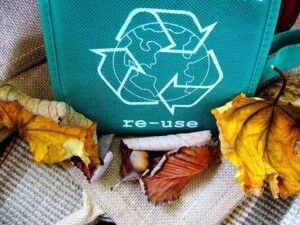Cutting Down on Both Personal and Commercial Waste

The state of the environment seemed to be deteriorating with each passing year. While recycling is up from a few years ago, at 32%, everyone could do better. The reduction of personal and commercial waste is a high priority. However, it may be difficult to put into action. But it’s simple if you know what you’re doing. Along with recycling, energy efficiency is important for the environment. Single-use plastics are killing marine life at an alarming rate.
Everything should be recycled.
You’ve most likely heard this one before, but it’s important to recycle whatever you can whenever possible. In a typical office, paper makes up 70% of the waste. Don’t dispose of paper since it can be recycled greatly. Pre-sorting trash increases recycling efficiency. The only thing you have to do is use various containers for different kinds of rubbish. There might be bins for paper, glass, and recyclable metals like drink cans, for example.
Use Recycled Materials
You may contribute even more to the recycling process by buying recycled items and resources. If you must use paper in your company, for example, only recycled parchment should be used. Once you have completed your secure document shredding , you could use the remnants for packaging, or even at home as bedding in your hamsters’ cage.
Energy Awareness
Electricity is essential to both your personal and professional lives. That’s simply the way things are nowadays. However, the mere fact that energy exists does not justify its misuse. With current energy costs reaching historic highs, you may save money by just using what you need. Simple changes can save energy:
- Don’t keep gadgets on standby for extended periods of time.
- Install energy-efficient LED light bulbs.
- Connect appliances to energy-saving outlets.
- Purchase energy-saving appliances.
- Reduce your thermostat setting.
- Wash at a cooler temperature.
Just by making these few adjustments, you will save a decent amount of money. If you add them all together, though, you might have a substantial influence on your energy use and expenses.
Consider a Paper-free Office
A paperless workplace is an option to explore in addition to cutting down on waste. One of the primary reasons Bill Gates founded Microsoft Office was because of this belief. Basically, you should only use paper when it’s really important. Modern technology simplifies this. Video conferencing has never been simpler, thanks to Zoom, Skype, and Teams, as well as document tools that facilitate teamwork.
Prohibit Single-Use Products
Single-use goods are a major contribution to the plastic scourge. Microplastics, which are found in everyday things like flatware, water bottles, food containers, and dog waste bags, are a major threat to marine life. Currently, our seas contain more than 5 trillion particles of microplastic.
- Microplastics claim the lives of one million seabirds every year.
- 100,000 marine creatures are also killed.
- Plastic is discovered in 100% of newborn sea turtles.
Making even the tiniest adjustments may make a big difference in this troubling problem. Replace plastic bags for dog waste with biodegradable ones, use reusable water bottles, and only purchase food packaged in paper. Finally, the vast majority of significant firms are either making the move to environmentally friendly packaging or have already done so.


